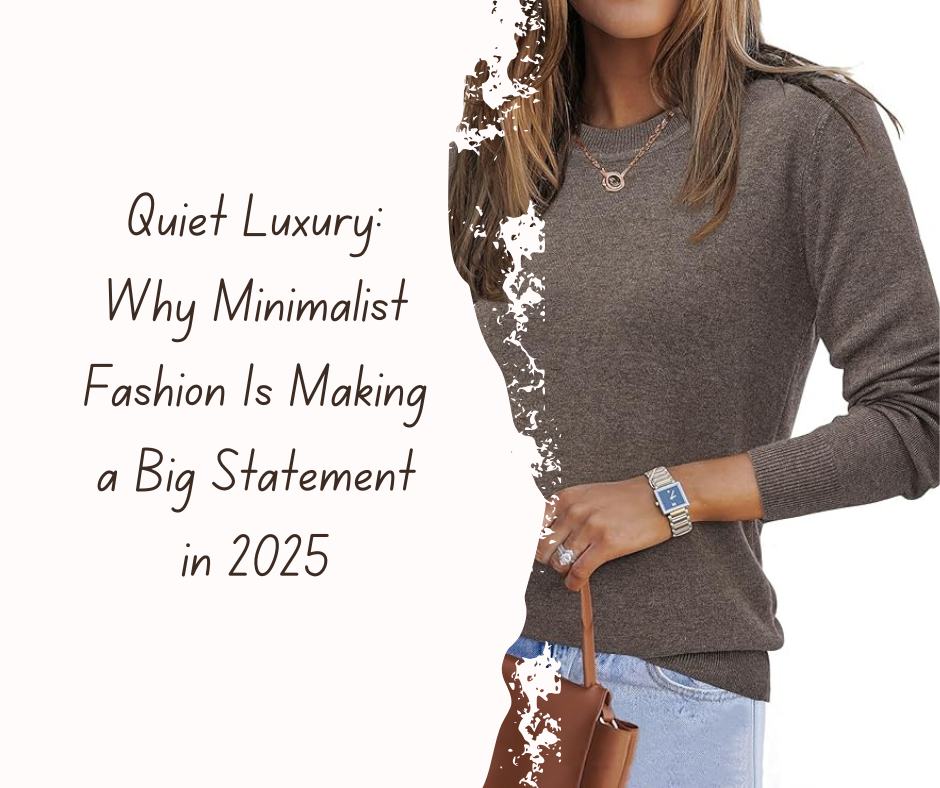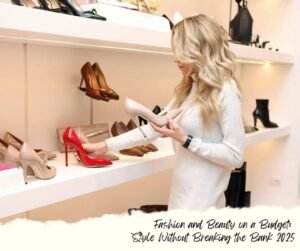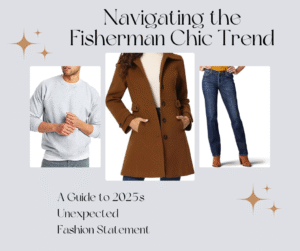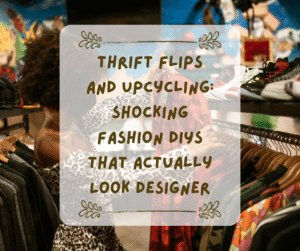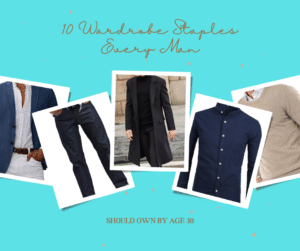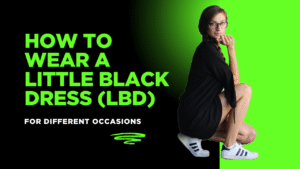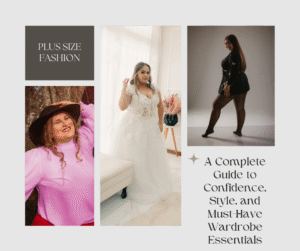This post may contain affiliate links. I may receive compensation if you sign up for or purchase any products through the links below. As an Amazon Associate and affiliate marketer for many other businesses, I earn from qualifying purchases. Please read my disclosure for more information.
Quiet luxury is an emerging concept in the fashion industry characterized by understated elegance, refined simplicity, and a strong emphasis on quality over ostentation. This movement is gaining traction, particularly as we enter 2025, as consumers increasingly seek to express individuality and align their fashion choices with contemporary values. Quiet luxury encapsulates the principles of minimalist fashion that prioritize clean lines, neutral palettes, and timeless designs instead of flashy logos or extravagant embellishments.
The resurgence of minimalist fashion can be seen as a response to the overconsumption and fast fashion trends that have dominated the industry for several decades. As awareness of sustainability and ethical consumption grows, more individuals are gravitating toward pieces that not only look good but also carry a sense of purpose. Minimalism in fashion encourages a thoughtful approach to wardrobe choices, where individuals invest in a select few high-quality garments that endure through time. This approach aligns seamlessly with the values of sustainability, focusing on reducing waste and promoting longevity.
Moreover, quiet luxury serves as a reflection of personal expression in a modern context. It allows individuals to showcase their style through carefully curated outfits that speak volumes without being overly conspicuous. By choosing minimalistic pieces, one can convey sophistication and taste, embracing the idea that less can indeed be more. The growing movement towards quiet luxury is reshaping perceptions about fashion, encouraging a lifestyle that prioritizes mindfulness over materialism. As we explore the dynamics of minimalist fashion trends in 2025, it becomes clear that quiet luxury is not merely a passing trend but rather a significant evolution in how fashion is perceived and practiced.
The Rise of Minimalism in Fashion
Minimalist fashion has emanated its calming influence from its origins in the late 20th century, setting the tone for a distinctive aesthetic that prioritizes simplicity and functionality over ostentation. This design philosophy emerged in the 1960s and 1970s, initially seen in the art world, where artists favored stripped-back works that rejected excess. The transition of minimalism into fashion, however, was catalyzed by visionary designers such as Jil Sander, Calvin Klein, and Rei Kawakubo, who challenged the norms of a flamboyant fashion landscape dominated by overwhelming details and loud colors.
The 1990s marked a significant milestone in the evolution of minimalist fashion, with an increasing number of designers embracing clean lines, muted color palettes, and high-quality fabrics. This era saw the rise of the ‘minimalist uniform,’ consisting of basic yet versatile pieces that seamlessly integrate into daily wardrobes. The focus shifted towards craftsmanship and durability, reinforcing the idea that less is indeed more. Minimalism was not just a movement; it was a statement that communicated sophistication, allowing individuals to express their identities without the clutter associated with fast fashion.
As we progressed into the 21st century, the resurgence of minimalist fashion became apparent as more individuals sought authenticity, sustainability, and practicality in their clothing choices. Influences from Scandinavian design and Japanese aesthetics played a significant role during this time, demonstrating that minimalism encompasses cultural nuances and diverse perspectives. The contemporary minimalist movement has transcended mere aesthetics; it has emerged as a lifestyle choice emphasizing intentionality and mindfulness in fashion consumption.
In recent years, the minimalist trend has strengthened further, especially as consumers increasingly favor timeless wardrobe staples over transient trends. This evolution highlights the intrinsic connection between simplicity and sophistication in clothing, ultimately establishing minimalist fashion as a powerful expression of personal style for 2025 and beyond.
Key Characteristics of Quiet Luxury
Quiet luxury fashion is distinctly characterized by its focus on subtlety and sophistication, emphasizing a refined aesthetic over ostentation. One of the most prominent features of this style is the use of clean lines. Clothing that embodies quiet luxury often features streamlined silhouettes that inherently convey elegance and simplicity. This minimalist approach ensures that each piece stands out for its craftsmanship rather than excessive embellishments.
Alongside clean lines, a neutral color palette is another defining trait of quiet luxury. Soft, muted tones such as beige, cream, gray, and soft pastels dominate this aesthetic, allowing outfits to create a cohesive and timeless appeal. This limited color range not only enhances the wearability of the garments but also allows for versatility in styling, as the pieces can be easily mixed and matched with others within a wardrobe. By opting for understated hues, wearers of quiet luxury fashion can express elegance without resorting to bold prints or flashy colors.
Moreover, the use of premium materials significantly contributes to the allure of this fashion trend. Fabrics such as cashmere, silk, and high-quality cotton are often employed to create garments that are both visually appealing and tactilely satisfying. The emphasis on quality over quantity is evident in every aspect of quiet luxury, as each item is designed to last and offer comfort to the wearer. Additionally, meticulous attention to detail is crucial in quiet luxury fashion. Subtle design elements like delicate stitching, hidden closures, and thoughtfully placed seams reflect a commitment to craftsmanship and an understanding that luxury lies in the details rather than overt extravagance.
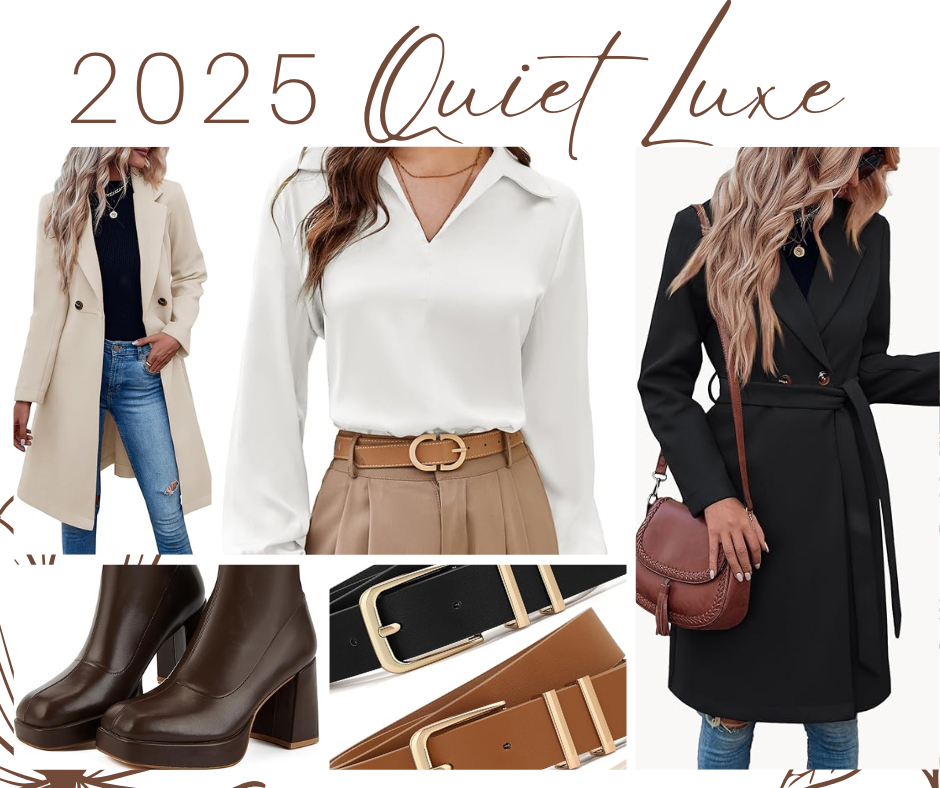
The Appeal of Minimalism in Modern Society
Minimalism in fashion is gaining momentum as consumers increasingly gravitate towards styles that embody simplicity and restraint. This shift can be attributed to a convergence of cultural values that prioritize sustainability, quality, and emotional well-being. As environmental awareness rises, individuals are now more inclined to seek clothing that aligns with sustainable practices. Minimalist fashion often emphasizes the use of eco-friendly materials and ethical production processes, making it a favorable choice for conscious consumers who are committed to reducing their environmental footprint. The push towards sustainable fashion resonates deeply in a world grappling with climate change, further solidifying the appeal of minimalist aesthetics.
Another critical factor contributing to the allure of minimalist fashion is the growing desire for lasting quality over transient trends. In a society overwhelmed by fast fashion, consumers are beginning to recognize the impact of their purchasing decisions. The shift towards timeless, versatile pieces means that individuals are viewing their wardrobes as investments rather than mere consumables. By embracing a minimalist approach, consumers can curate a wardrobe filled with high-quality essentials that not only serve functional purposes but also stand the test of time against fleeting fashion trends.
Moreover, the emotional benefits of a decluttered wardrobe cannot be overlooked. The psychological burden of excessive options often leads to decision fatigue, while a streamlined wardrobe allows for easier outfit selection and a reduced sense of overwhelm. This clarity and simplicity contribute to an overall sense of peace and empowerment, thereby enhancing individuals’ connection to their personal style. Minimalism, therefore, transcends mere aesthetics; it fosters a lifestyle and mindset that values intentionality and mindfulness in fashion choices. As modern society continues to embrace these principles, it is clear that minimalist fashion holds a significant and lasting appeal in 2025 and beyond.
Spotlight on Influential Minimalist Designers
The minimalist fashion movement has seen significant contributions from several influential designers who embody the principles of quiet luxury. One prominent figure in this realm is Jil Sander, often referred to as the ‘Queen of Less.’ Renowned for her sleek lines and refined silhouettes, Sander’s work emphasizes precision and craftsmanship while stripping down garments to their core essence. Her designs often feature monochromatic color palettes and high-quality materials, reflecting a philosophy that champions simplicity without sacrificing elegance. Brands like Jil Sander have played a crucial role in establishing minimalist fashion as a sophisticated choice for discerning consumers.
Similarly, the work of Phoebe Philo during her tenure at Céline reinforces the ongoing allure of minimalist fashion. Philo’s collections showcased a deliberate blend of luxury and utilitarian aesthetics, leading to a renewed appreciation for timeless wardrobes that prioritize functionality. Her ability to balance modern shapes with a sense of understated glamour has profoundly influenced both high-end and accessible fashion brands. Under her guidance, Céline became synonymous with a quiet yet powerful statement, appealing to a wide array of fashion enthusiasts who embrace a minimalist lifestyle.
Another prominent designer shaping this landscape is The Row, founded by Mary-Kate and Ashley Olsen. Their vision for the brand revolves around creating refined garments that embody effortless sophistication. The Row emphasizes impeccable tailoring and luxurious fabrics, often focusing on layers that enhance the wearer’s silhouette. This approach aligns perfectly with the concept of quiet luxury, as it marries comfort with high fashion, allowing individuals to express their identity through subtle and deliberate choices.
These designers, among others, exemplify the essence of minimalist fashion, each contributing distinct interpretations of simplicity and luxury. Their collective efforts have shaped public perception and elevated the minimalist trend, making it a significant movement within contemporary fashion.
Quiet Luxury in Everyday Life
Incorporating quiet luxury into everyday life involves a conscious approach to wardrobe choices that emphasizes timelessness and simplicity. The foundation of a quiet luxury wardrobe is built on selecting pieces that are both versatile and durable. Start by curating a capsule wardrobe that includes classic garments such as tailored trousers, well-fitted blazers, and elegant dresses in neutral colors. These staples can be easily mixed and matched, allowing for numerous outfit combinations that exude sophistication without excessive adornment.
When it comes to color and fabric choices, opt for palettes that include soft, muted tones, which can evoke a sense of tranquility and refinement. Fabrics such as linen, cashmere, and high-quality cotton not only enhance comfort but also add an element of luxury to everyday attire. Prioritizing quality over quantity ensures that each piece in your wardrobe serves a purpose and can withstand the test of time, reinforcing the minimalist ethos of quiet luxury.
Accessorizing intentionally plays a crucial role in achieving a minimalist yet stylish aesthetic. Instead of overwhelming an outfit with numerous accessories, focus on selecting a few key items that reflect your personal style. Consider investing in a statement watch, a simple leather handbag, or a pair of elegant shoes. These accessories should complement your ensemble, adding an air of sophistication while maintaining simplicity. Additionally, incorporating minimalistic jewelry can enhance your overall look without detracting from the understated elegance characteristic of quiet luxury.
By adopting these practical tips for incorporating quiet luxury into your daily wardrobe, you can cultivate a personal style that not only embodies elegance but also prioritizes simplicity and quality. This approach not only enhances your fashion choices but also reinforces a mindful way of dressing that resonates with the principles of minimalism.
How to Sustain the Quiet Luxury Philosophy
The concept of quiet luxury, rooted in minimalism, thrives on the principles of sustainability and intentionality. Transitioning to a minimalist wardrobe involves more than just decluttering; it is a holistic approach to fashion that emphasizes the quality of one’s belongings. To adopt this philosophy successfully, individuals should begin by evaluating their existing wardrobe critically. Consider implementing a systematic decluttering process. This might involve the “one-year rule,” where items not worn in the past year are assessed for wearability and emotional value. By removing excess garments, you ultimately create a more curated collection that consistently represents your style and values.
Investing in quality over quantity is another key tenet of minimalist fashion. Seek out garments made from sustainable materials that promise longevity, rather than fast fashion pieces that may quickly fall out of favor. Opting for timeless designs can also complement various occasions, facilitating fewer purchases over time. It is beneficial to research brands that embody the quiet luxury ethos, focusing on those that prioritize ethical manufacturing processes and transparent supply chains. This way, consumers make informed decisions that contribute to a more sustainable fashion ecosystem.
Mindful purchasing decisions play a crucial role in maintaining a minimalist wardrobe. Before acquiring a new item, ask yourself if it aligns with your personal style and if it will enrich your current wardrobe. Consider whether the piece can be easily styled with existing favorites, enhancing versatility. Moreover, contemplate the impact of your choice — each purchase should reflect not only an aesthetic desire but also a commitment to sustainability. By limiting impulsive buying habits and prioritizing essentials that exude quality, individuals can authentically embody the quiet luxury philosophy and enjoy a fashion-forward yet environmentally conscious lifestyle.
The Future of Minimalist Fashion
The future of minimalist fashion appears promising and multifaceted as it evolves alongside technological advancements and changing consumer values. In 2025 and beyond, we can expect minimalist fashion to become deeply intertwined with sustainability, leveraging innovative techniques that minimize waste and encourage ethical practices. Emerging technologies such as 3D printing will enable designers to create garments with greater efficiency, allowing for the production of high-quality pieces that embody the essence of quiet luxury—timeless, understated elegance.
As we move forward, we anticipate an influx of emerging designers who are focusing on minimalist aesthetics and sustainability. These individuals are likely to challenge traditional fashion norms with creations that highlight craftsmanship and intentionality. The rise of direct-to-consumer models and digital fashion shows will empower these designers to showcase their work without the constraints of the conventional fashion calendar, allowing for a more organic and authentic connection with their audience. Their approach is expected to influence established brands, driving a shift toward simplicity and quality over mass production.
Furthermore, global fashion shows will increasingly highlight minimalist fashion, presenting it as a leading trend. Runway events are set to become platforms that not only promote design innovation but also advocate for sustainability and inclusivity. Designers and brands focused on quiet luxury will likely gain recognition for their commitment to ethical production methods and minimalist designs that resonate with global audiences. As the industry shifts towards transparency, consumers will become more informed about their choices, further paving the way for minimalist fashion to flourish.
Ultimately, the future of minimalist fashion holds a collaborative space where sustainable practices, emerging talents, and consumer engagement converge, shaping a landscape that values quality and authenticity over excess. This evolution will not only redefine minimalist fashion but will also establish a blueprint for the broader fashion industry in a world increasingly focused on mindful consumption.
Conclusion: Embracing Quiet Luxury in 2025 and Beyond
As we reflect on the rise of minimalist fashion in 2025, it becomes evident that quiet luxury offers a refreshing perspective on style and personal expression. This trend emphasizes the importance of quality over quantity, suggesting that a well-curated wardrobe can indeed serve as a powerful statement. Minimalism has resonated with individuals seeking to simplify their lives while still expressing their unique identities through carefully selected pieces that stand the test of time.
The shift towards quiet luxury underscores a broader cultural movement towards sustainability and conscious consumerism. By prioritizing timeless, versatile designs, consumers are not only embracing elegance but are also making a profound impact on the fashion industry. This approach fosters an appreciation for craftsmanship, encouraging brands to invest in quality materials and ethical production methods that align with their audiences’ values.
Furthermore, the enduring appeal of minimalist style highlights the balance between aesthetics and practicality. The minimalist aesthetic allows individuals to create looks that are both chic and functional, emphasizing personal comfort and self-expression. It invites everyone to discover the beauty of restraint and the elegance that simplicity brings to everyday life.
In summary, embracing quiet luxury in 2025 and beyond means recognizing that fashion can still be a highly personal endeavor while also contributing to a more sustainable future. As we continue to witness the evolution of style, let us celebrate the profound impact of thoughtful choices in our wardrobes. Quiet luxury is not merely a trend; it is a lifestyle that champions introspection, authenticity, and enduring beauty.

